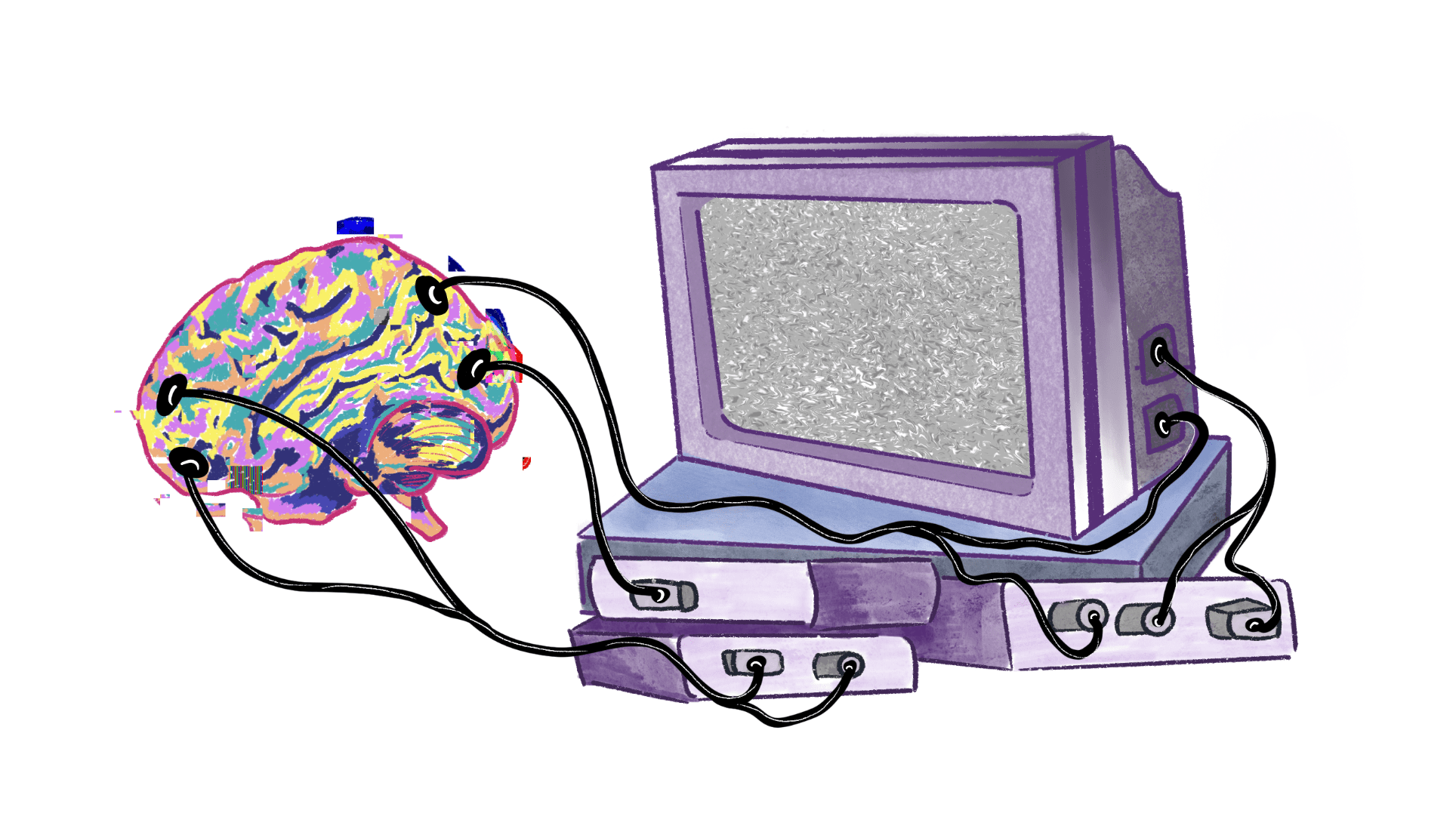Background
You may be familiar with Botvinick and Cohen’s famous 1998 Rubber Hand Illusion experiment, which demonstrated that people could feel tactile sensations on an artificial hand when their actual hand was covered on a table next to them (The BBC demonstrates the experiment here). The study provided an early indication that the way we identify what is and is not ‘our body’ may involve a multi-sensory interaction between vision, touch, and proprioception (spatial awareness). However, this idea that the way we define what is our body may be influenced by our flawed and ‘trickable’ senses continues to be controversial.
Moving forward a few years, and the creation of immersive virtual reality (IVR) technology has provided users with the sensation of being physically present in a digital landscape by interacting with it as a digital avatar. Just as in the Rubber Hand Illusion, users report strong illusory feelings of ownership over these avatars’ artificial ‘bodies’. In the world of neuroscience, researchers have become fascinated with such effects, which have come to be known as ‘body ownership illusions’. Already, clinical applications of body ownership illusions for the treatment of neurological disorders have emerged, and so a pivotal question remains: Where does this powerful sensation come from?
Digging into the study
In a futuristic take of the rubber hand illusion, a new study by UCL’s Elias Casula has demonstrated the potential origins and mechanisms of body ownership in the brain by merging IVR and neuroimaging technology. Participants in the study sat with their hand covered on the table in front of them, viewing an artificial arm and hand which would be ‘stroked’ in IVR, all while transcranial-magnetic stimulation (TMS) was used to stimulate the ‘hand-area’ of the participant’s left primary motor cortex.
The primary motor cortex in the brain is primarily responsible for contralateral muscle movement, meaning that stimulating the hand-controlling area of the left structure increases neuron activity related to moving the right hand/arm. Electrical activity in the brain during this process was monitored using an electroencephalogram (EEG) attached to the scalp.
In a fascinating turn, the results of Casula’s study suggested that a dynamic network in the brain is behind the feeling of embodying an artificial limb. Within 30 milliseconds of the first TMS pulse, a rapid drop in premotor and primary-motor activity was detected. This is likely due to our shifting attention to the ‘new limb’ that we can see in IVR.
After 250 milliseconds, this was followed by increased activity in the posterior parietal cortex. Participants who reported a stronger feeling of owning the hand/arm were positively correlated with greater activation in this brain area.
This is highly significant, as the posterior parietal cortex of the brain is involved in spatial attention/awareness and the control of eye movement. Activation in this brain area suggests that the mechanisms of touch, proprioception and sight are all involved in creating the feeling of body ownership. Identified as a fronto-parietal network, it corroborates the conclusions that were made in Botvinick and Cohen’s 1998 Rubber Hand Illusion.
Importantly, this study expands our existing understanding of how the brain reacts to body ownership illusions, and demonstrates neural plasticity and the role of the primary motor cortex in this process.
Of course, a few caveats ought to be mentioned: Fifteen participants were needed to establish statistical significance in this study, and although nineteen took part in the landmark study, we should tread cautiously before taking it as representative of the general population. Further investigation is still needed to gauge how neural activity may vary across a broader demographic, particularly amongst the neurodivergent community. For example, autistic individuals often respond differently to the rubber hand illusion.
The strength of the illusion felt during the IVR experiment was also self-reported through questionnaires, introducing bias due to the subjective nature of questions about ‘feelings’ of ownership. Though such qualitative results are still valuable, they should not be considered definite results. The use of TMS to stimulate nerve cells in the brain also comes with limitations on accuracy, as the results could have also been influenced by other non-targeted regions which the EEG was unable to specify between. However overall, it is an important step towards understanding body ownership illusions and making the use of IVR widespread.
Recent studies have already documented the immense potential therapeutic applications of IVR illusions for sufferers of body distortion; some patients with anorexia in The Netherlands have experienced lasting improvements to the self-perception of their body size after being exposed to VR full body illusions of different sizes. It appears that inducing a body ownership illusion and changing aspects of it, such as size, transparency and realism, may allow for new neural pathways to be formed in the brain. A meta-review found that for sufferers of pain and chronic pain conditions, including patients with phantom limb pain, nerve injuries, osteoarthritis and complex regional pain syndrome, their average pain rating decreased by half after undergoing virtual-limb treatments.
Previously, we have thought about the sensorimotor ‘body schema’, or physical sense of ourselves in space, as being different to a conscious-evaluative ‘body image’, representing how we perceive or feel about our body. However, the use of body ownership illusions to treat disorders traditionally considered both ‘mental health’ and ‘physical health’ issues is increasingly suggesting that this is not the case. Casula’s study is exciting because it supports the idea of ‘one body’ in the brain, with ‘body image’ and ‘body schema’ existing as an interrelated matrix. Such a shift represents a change in how we think about and treat different neurological disorders.
A better understanding of the neural mechanisms underlying body ownership is therefore critical to allow for IVR to be better utilised in healthcare settings.





